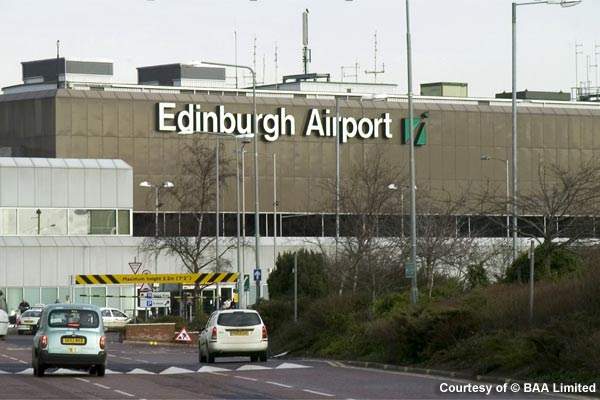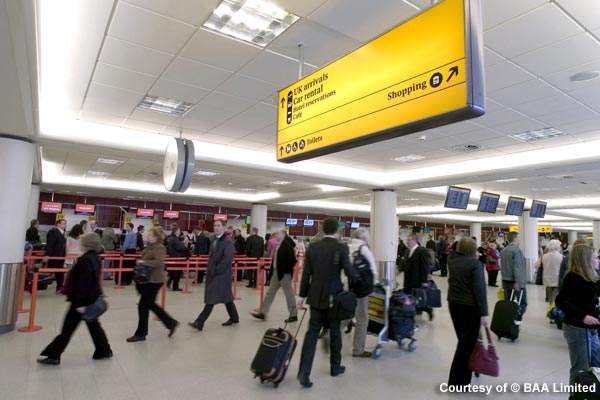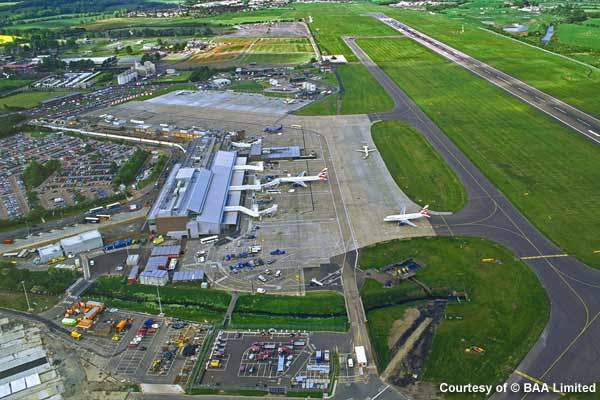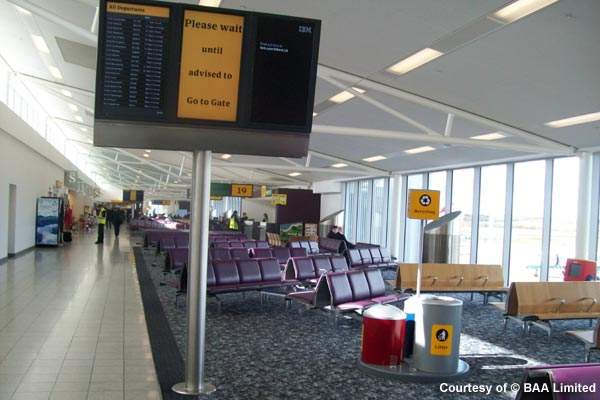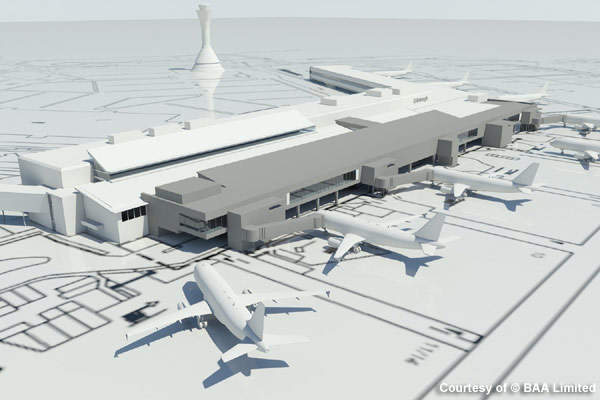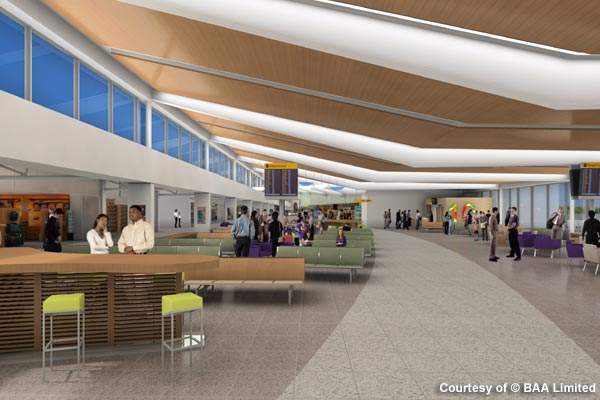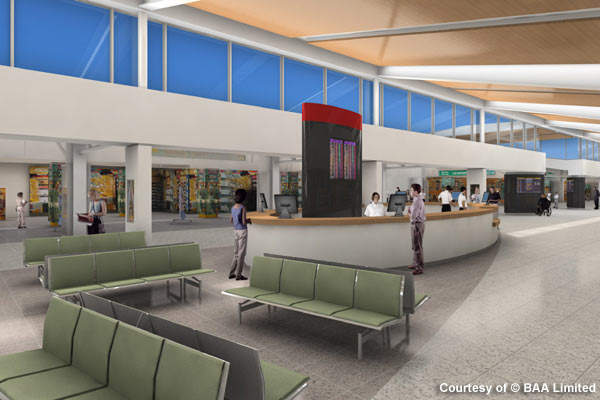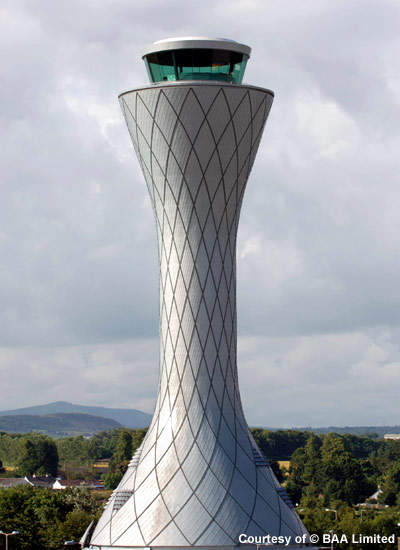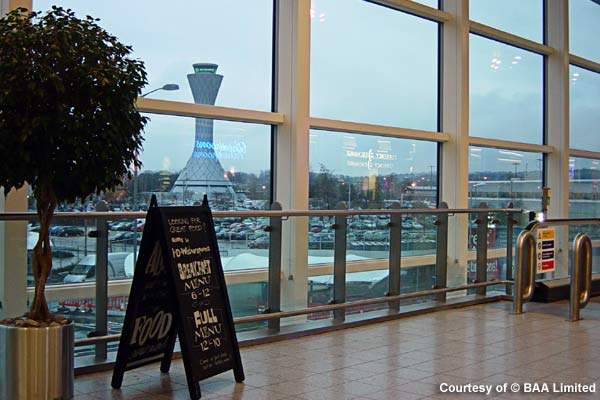Edinburgh Airport opened in 1977 and is Scotland’s capital airport. It is the sixth busiest airport in the UK and connects to more than 110 international destinations.
Edinburgh Airport was owned and operated by BAA Airports, which also owns Aberdeen, Heathrow, Southampton, Stansted and Glasgow airports. BAA sold Edinburgh Airport to Global Infrastructure Partners (GIP) in June 2012.
Approximately 24,000 passengers pass through the airport every day. Each year, it handles over nine million passengers and 100,000 aircraft movements.
The airport has two runways, with the main runway measuring 2,560m. The crosswind runway measures 1,976m and has 20 boarding gates. Edinburgh has a single terminal, and work on a £40m terminal expansion project began on 11 February 2009.
Edinburgh Airport master plan
BAA’s latest Edinburgh Airport masterplan was published in 2011. It forecasts passenger traffic to grow to 16.5 million a year by 2021.
The masterplan includes the construction of hangars and aircraft stands, as well as transport improvements to and from the airport.
The 2006 masterplan commits to building an additional runway at the airport if required, but suggests that there would be no need for such a project until 2030 when passenger traffic is expected to reach 26 million a year.
Terminal expansion project
Edinburgh’s £40m terminal expansion project is part of a proposed £100m investment at the airport, which is entirely funded by GIP. The ten-year project will extend the terminal by 5,000m² to increase its capacity and offer more space for passengers.
The airport also witnessed the opening of a new security screening area with room for 14 X-ray machines that handle up to 13 million passengers a year.
Archial Group was the designer of the terminal, whereas the engineering and construction contract was awarded to Balfour Beatty. The first phase of the project, which included the construction of a new departure lounge, opened in 2010. The lounge houses a wide range of shops, restaurants and bars.
A £25m terminal expansion was further announced in August 2013 as part of a five-year, £150m investment programme. The terminal expansion project added 6,000m² to provide more space for passengers and retailers.
The expansion works commenced in October 2013. The security area around the expansion was commissioned by late 2014, while the new retail space was opened in 2015.
Construction began on the new expansion as part of a £80m ($105.5m) investment plan in August 2017. The expansion will expand the immigration, customs and international reclaim facilities, and will involve the creation of new retail spaces, gates and air bridges.
South-east pier terminal expansion
In September 2006, Edinburgh Airport’s south-east pier terminal was expanded in a £19m project. The pier’s design allows for a further sustainable and incremental expansion. The pier has six additional boarding gates, lounge facilities and space for retail outlets and offices.
A modern lighting system, which dims lights automatically when not required, was installed to reduce the airport’s carbon dioxide usage and save energy. Two 60m travelators were installed at the facility for departing passengers. The travelators run on energy-efficient motors.
Runway resurfacing
BAA began resurfacing the main runway in March 2008 with a £16m investment. The work was completed in November 2008, and the runway is expected to last for about ten years.
The project involved laying approximately 25,000t of new asphalt and replacing 1,000 runway lights.
Air traffic control tower
The ATC tower, which opened in November 2005, is one of the major elements of the airport’s development and modernisation programme. Work on the £10m 57m-high tower began in May 2004 and was completed in July 2005. The tower was designed by Reid Architecture and construction firm Laing O’Rourke was the principal contractor.
The tower has a 360° view of the airport stands, runways and aircraft movements. It was designed to merge accommodation and tower in a single building to minimise the site’s footprint.
The tower consists of a 7m-diameter concrete circular core with a service riser and stairs, and internal walls forming the lift shaft. The equipment was lifted into planned positions by a 75m tower crane from in-house company Select Plant. The core topped by concrete slab is the base for the visual control room and includes back-up systems to avoid halt of operations during equipment failure.
Car parking
BAA opened a £20m five-storey car park opposite the terminal in September 2004. With 2,000 new spaces and a pedestrian walkway, the car park provided shorter entry and exit times from the terminal.
The innovative car park design features independent vertical circulation and a one-way search to all floors, with the safe segregation of payment lobbies and a lift from vehicle movement areas. It won the Best New Car Park Award at the British Car Parking Awards in 2005 for its design and parking schemes and services management.
Internet access
Edinburgh Airport is well connected, with the M9 and M90 motorways and express bus services linking it to Edinburgh City Centre. The airport does not have its own railway station, but it is close to the Fife Circle and Edinburgh-Glasgow railway lines. An interchange at the airport through the Edinburgh tram service is being planned.
The Edinburgh Airport Rail Link, a proposal to build an airport railway station as part of a direct rail link to connect airport with stations throughout Scotland, was cancelled by the Scottish Government in September 2007 due to of cost issues. The airport station was to be built beneath the terminal and a tunnel was proposed underneath the main runway. The construction was estimated to cost between £550m and £650m.
Road and rail infrastructure
Edinburgh Airport is well connected, with the M9 and M90 motorways and express bus services linking it to Edinburgh City Centre. The airport does not have its own railway station, but it is close to the Fife Circle and Edinburgh-Glasgow railway lines. An interchange at the airport through the Edinburgh tram service is being planned.
The Edinburgh Airport Rail Link, a proposal to build an airport railway station as part of a direct rail link to connect airport with stations throughout Scotland, was cancelled by the Scottish Government in September 2007 because of cost issues. The airport station was to be built beneath the terminal and a tunnel was proposed underneath the main runway. The construction was estimated to cost between £550m and £650m.
Environmental concerns
Edinburgh Airport works with Sustainable Aviation, a long-term strategy of the UK aviation industry to tackle challenges for a sustainable future. The airport also follows a carbon-trading system to lower overall emissions in the most economical way.
Related content
Glasgow Prestwick Airport, United Kingdom
Glasgow Prestwick Airport is an international airport located 1.9km northeast of Prestwick in South Ayrshire, Scotland.
Aberdeen International Airport, Scotland (ABZ/EGPD), United Kingdom
Forecast spending for 2012 has been lowered as government officials confirm the UK will pull out of Afghanistan by 2014.

